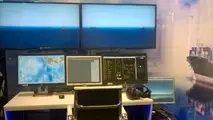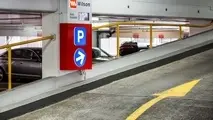Technology and digitalisation at forefront of freight development

New developments in wagon technology and a growing awareness of the need for digitalisation should help rail freight operators become more competitive, as Anitra Green discovered at the recent Transport Logistics exhibition in Munich.
One of the most interesting is the 5L demonstrator train being assembled by SBB Cargo in Switzerland within a project developed by the Technical Innovation Circle for Rail Freight Transport (TIS). The aim is to use technology which is already available to improve wagon performance in five respects: noise, weight, longevity, logistics compatibility, and life-cycle costs.
Mr Nicolas Perrin, CEO of SBB Cargo, is well aware of the need for digitalisation, especially in competition with the increasingly automated road sector: “In this digitalised world, railways can’t stand still. If we want to have telematics in place by 2025, we must start now,” Perrin said at the Transport Logistics exhibition in Munich in May, where part of the 5L train was on display. This includes check-in by RFID, predictive maintenance, wayside intelligence, remote diagnostics, asset intelligence, network intelligence, maintenance control, and user interface.
Six systems will be tested in the 5L train, which was due to start a four-year trial in Switzerland last month. The train has 16 wagons in different configurations with components contributed by other TIS partners. Low wear bogies with radial steering and low noise emissions are being supplied by Greenbrier, Waggonbau Niesky WBN, Eisenbahnlaufwerke Halle ELH and Tatravagónka Pograd, Slovakia. Low-noise and low-wear disc brakes are provided by Knorr Bremse, Dako-CZ, KES and Faiveley. Automatic couplers, similar to those used in passenger trains, are supplied by Voith and Faiveley, wheelsets by Lucchini, Bonatrans and Bochumer Verein, and various types of platforms by SBB Cargo. Finally, intelligence systems including the generation and processing of data, asset intelligence and condition monitoring are provided by P J Messetechnik (PJM), Austria. PJM’s WaggonTracker axle-mounted generator, which has been approved but is not yet in production, provides power for the data acquisition and monitoring devices.
Really necessary?
Time and again in Munich, the question was asked whether such sophisticated information technology systems are really necessary? The answer has to be yes - particularly at a logistics event where rail freight is an essential part of the transport chain. Each time, the comparison was made with road freight, which is already equipped with such systems. For maximum efficiency and productivity customers need asset intelligence to give them all the information they require for transport monitoring, load security, location, expected arrival time, and documentation.
In France, SNCF Logistics in partnership with Traxens is developing a new-generation freight train equipped with connected units capable of providing new services. The concept, which was presented in Munich, is designed to offer new safety inspection methods for trains as well as providing customers with the real-time data about their shipments. The system is due to go into operation this summer.
Road-rail transshipment techniques are another issue given frequent road congestion, notably in Germany. Vertical-loading gantry cranes used for containers cannot be used for most standard semitrailers, unless they have been specially adapted for lifting. Since few road hauliers are prepared to make the investment, several techniques have been devised.
The German CargoBeamer system is slowly becoming more widely used. The semitrailer is driven on to a cradle, which can then be slid sideways onto a custom-built wagon, or it can be lifted. Around 5500 semitrailers were handled using CargoBeamer last year and the number of customers in Europe is growing, according to CEO Mr Hans-Jürgen Weidemann. The fleet of 45 wagons is currently being increased to 75, and Weidemann looks forward to building a network of 10-20 new terminals - to date there is only one dedicated terminal at the Volkswagen factory in Leipzig.
With the Nikrasa system, developed by the Logistics Competence Centre LKZ in Germany, the semitrailer is also driven on to a cradle that can be lifted, with a portable ramp used to hold the cradle. The updated Nikrasa 2.0 model, on display in Munich, offers more flexibility than the prototype in that it can accommodate a wide variety of semitrailers, not just standard units. The latest move by LKZ is to bring representatives from the rail and semitrailer sectors together to devise a standard semitrailer dubbed the Future Trailer, in an effort to combat the tendency in Germany towards an ever-wider variety of units.
The Lohr Railway System needs special terminals and wagons for horizontal loading. Each wagon has a swiveling section that allows semi-trailers to be driven onboard at an angle to the train’s direction of travel. A train can be loaded in just 30 minutes. The system is used on several routes across France.
Unfortunately, the cash-strapped rail freight sector has been reluctant to invest in technical developments, but it needs to do so if it wants to become more competitive.



